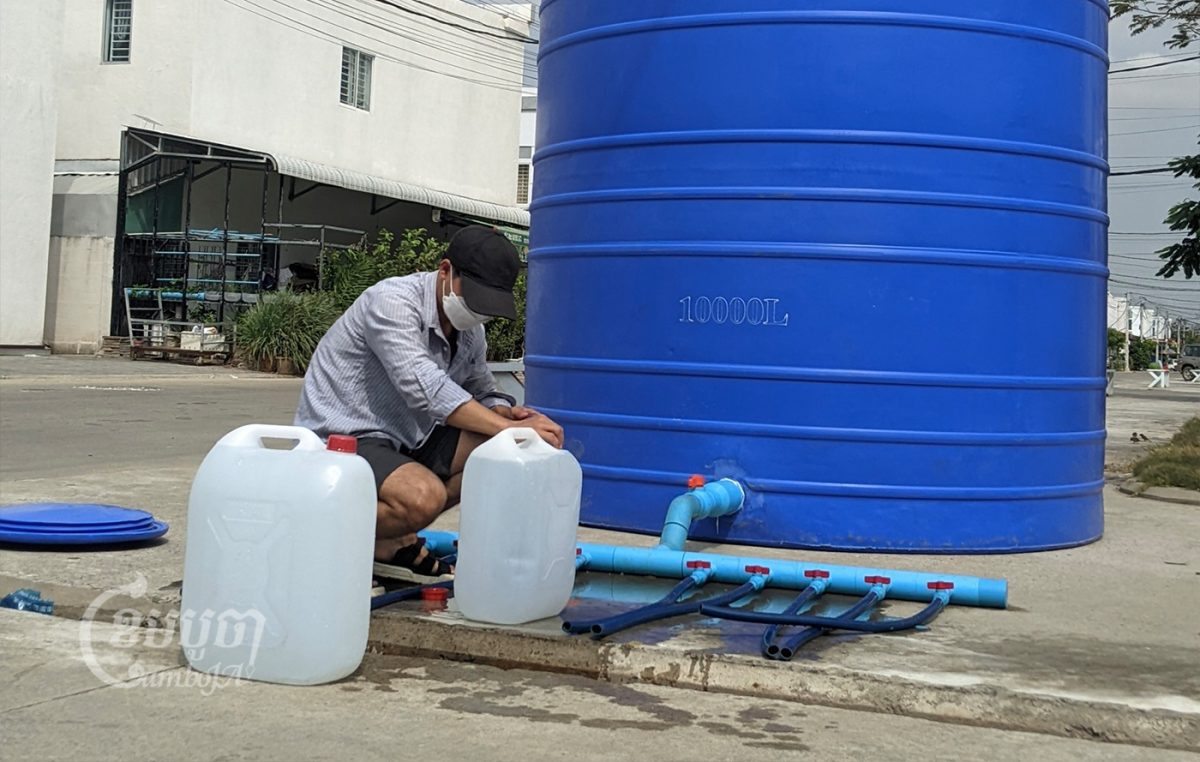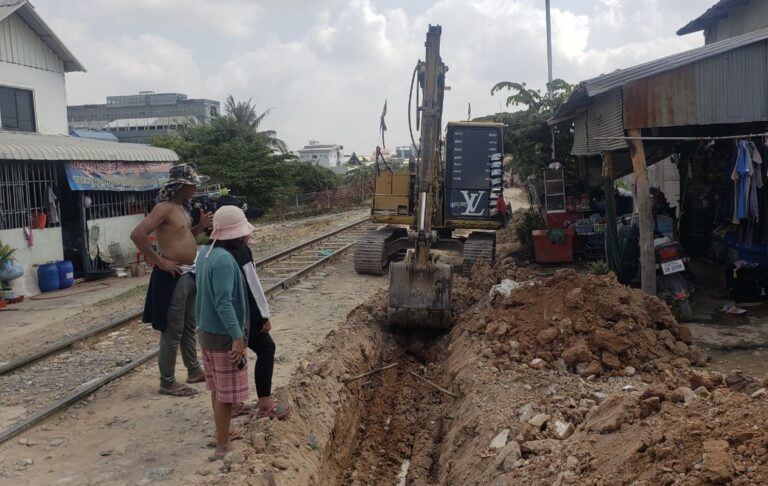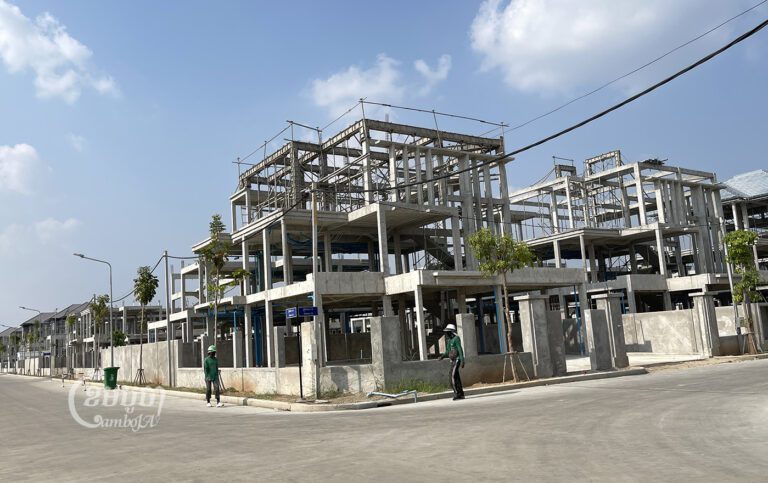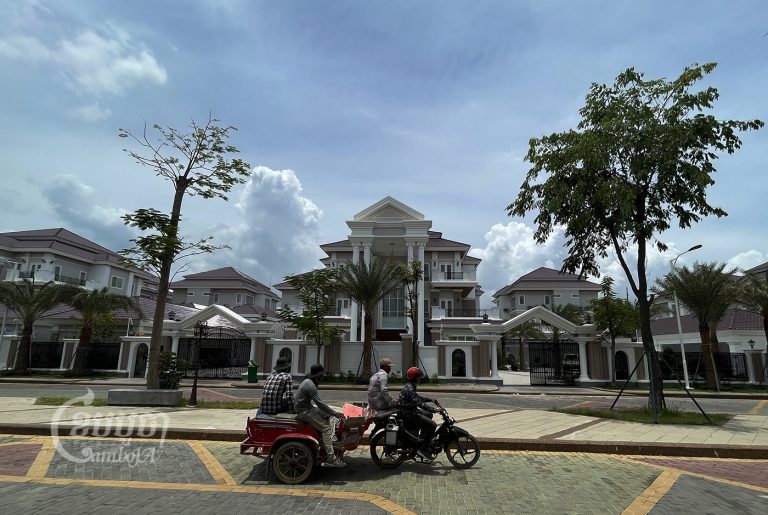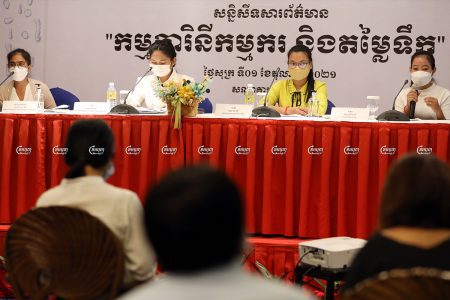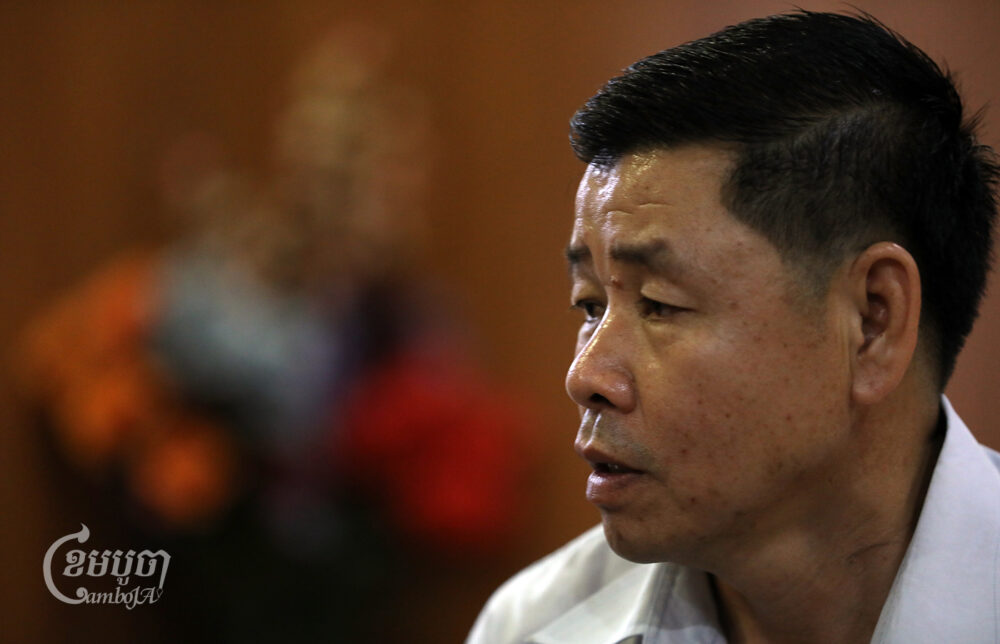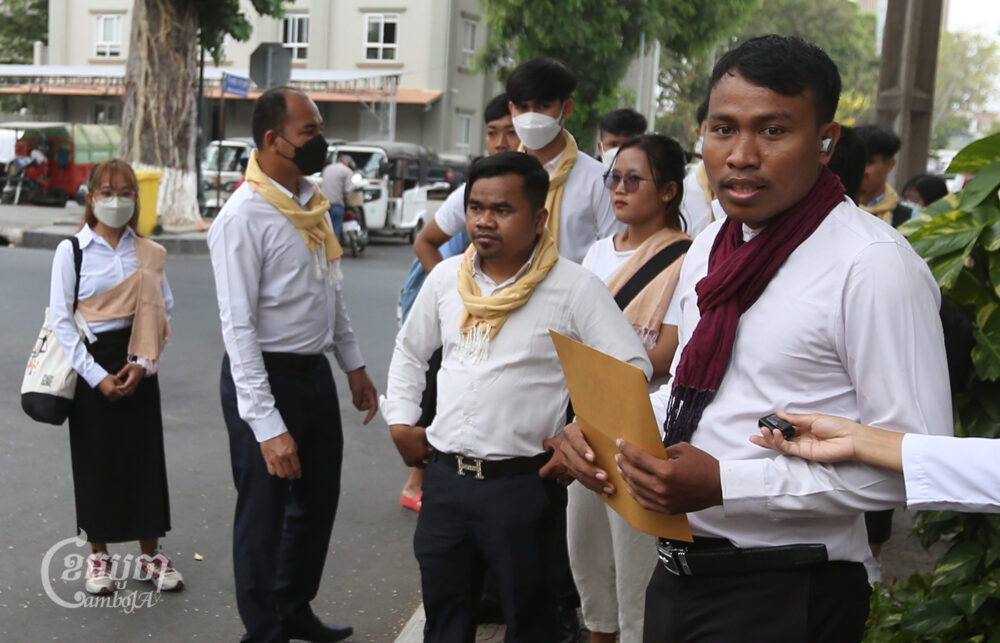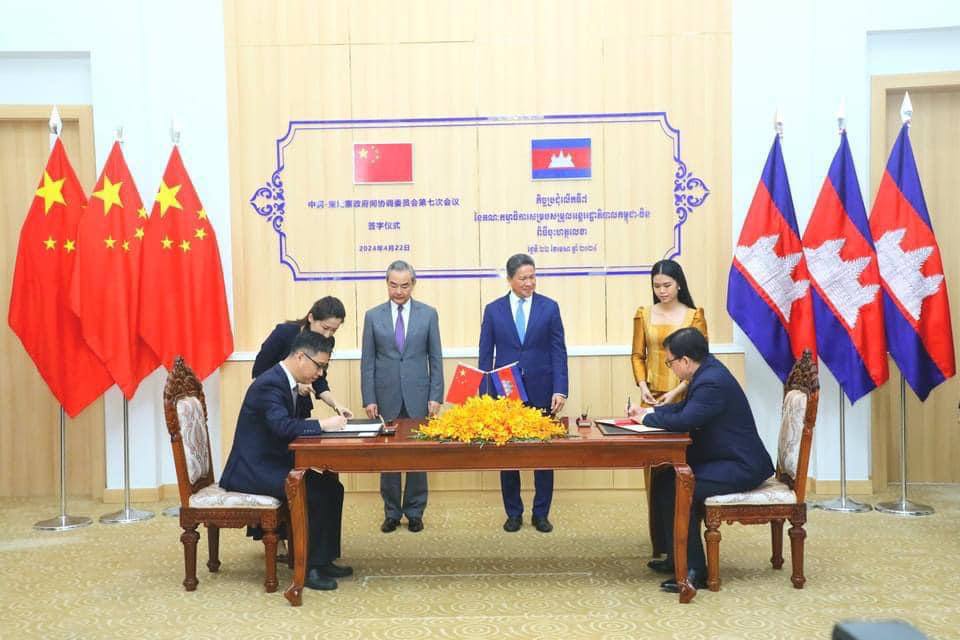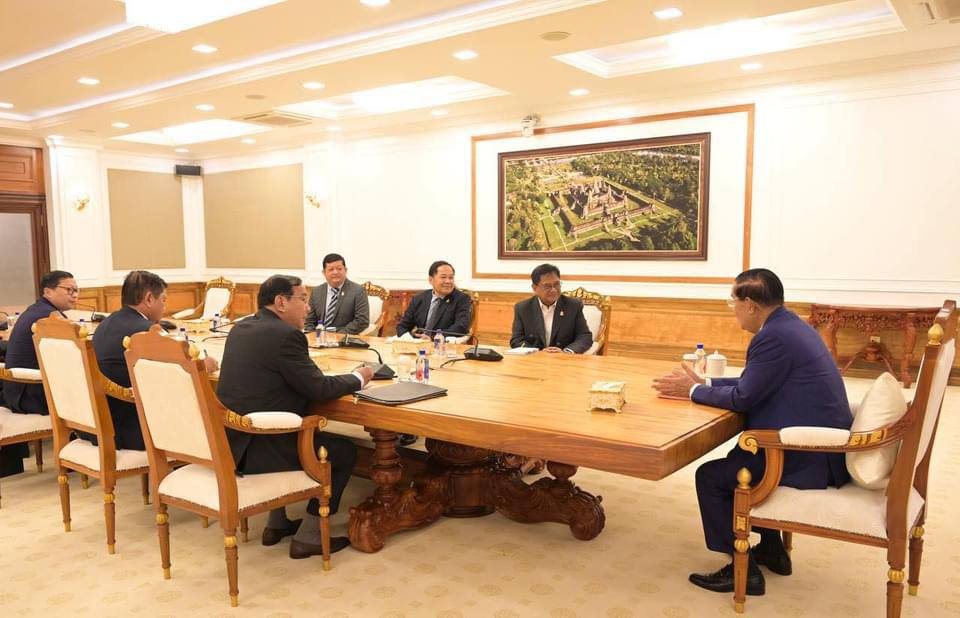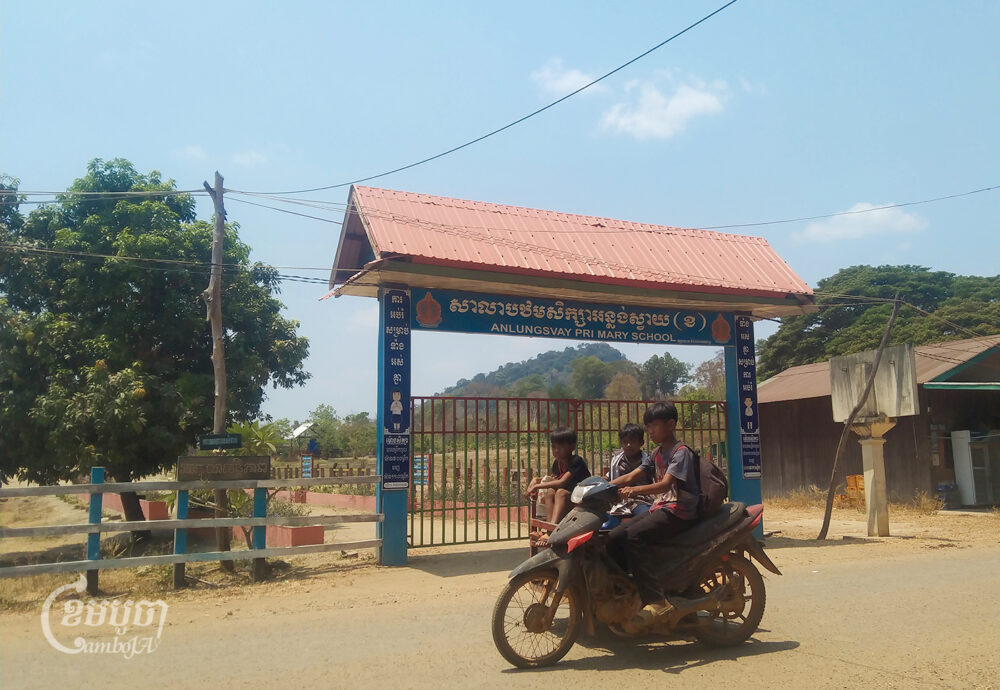There is a water crisis in new neighborhoods on the outskirts of Phnom Penh, according to fed-up residents who say the taps are often dry at the boreys, or gated communities, they live in.
Some people buy water in bulk to make up for the shortages, while others wake up in the early hours of the morning to make sure they have at least some water for use later in the day.
“This year is even more difficult than previous years. Before the water cut out once every two days and came back around 1 or 2am, but this time there’s not even a drop of water,” said Ang Soyada, a Pur Senchey district resident. “I turn the water pump on all night and there’s still no water in the basin.”
Ms. Soyada bought a house in Borey Piphub Thmey Choukva II in Samrong Krom commune three years ago and says there are always water shortages between January and May.
Because the Phnom Penh water authority cannot meet demand, the borey places big water basins outside for residents to share.
“The Borey owner does not tell us the reason for the shortage and many people living here have moved out because they could not live without water. But I do not have a choice, if I lived in a rental house I would leave too,” she said. “It is miserable because we don’t have water.”
Ms. Soyada said it’s become so bad that she limits her baths because she wants to save water for cooking and clothes washing.
“Look at my child’s hair – he has not had a bath yet,” she says, pointing at her son. “And my mother is aging, she needs to be able to have water to use.”

Lun Theany, another resident in Borey Piphup Thmey Chhouk Va II, has similar complaints. She said she has to wait until about 3am to turn on the taps and fill up her basin.
There’s often no water at all, so like many others she’s forced to buy water from private suppliers or get it from the Borey’s water basins.
“As you have seen we have to compete with each other to get water. We want to buy water too but there are very few suppliers, I call them five times per day but still cannot get it,” she added.
Hem Darith, Pur Senchey district governor, raised his voice when contacted by a reporter about the problem, saying local authorities are sending trucks loaded with water tanks to supply residents who don’t have any water.
“Authorities can only help to coordinate and provide some trucks to bring water to them, but cannot fulfill the demand,” he said.
It’s a similar story in Borey Piphup Thmey Kambol I in Phnom Penh’s Kambol district, where one resident told CamboJA he’s been living with water shortages for seven years.
“Since I have been here there has been no water and the Borey owners have had to provide a water basin for up to 500 households,” said Chheang Sokmao. “It has been seven years and there is no solution.”
“I have to buy water every two days which costs me about $6.25. And some others have to wait for some water from the Borey’s water basin and it takes a very long time – the situation is miserable,” he added.

Khim Sunsoda, Kambol district governor, said that the water shortage is due to the fast expansion of the capital, and the water supply can’t meet the demands caused by the rapid development.
“District authorities have contacted Borey owners to deploy 20 to 30 water basins to help people there temporarily. As you know Kambol was just a rice field before but now it’s been built-up and is full of Borey projects,” he added.
Long Naro, general director of the Phnom Penh Water Supply Authority (PPWSA), declined to comment on the issue.
“I have been interviewed by Radio French International (RFI) you can listen to them,” he said.
“I can do nothing since there are many calls like this, how can I solve the water shortage problem for the residents on the outskirts?” he added..
His deputy, Samreth Sovithia, said PPWSA was in the process of fixing the problem.
“The matter has been solved, this is the last year of water shortages, we are working on this,” he said.
On their official Facebook page, PPWSA said the reason behind the water shortage was fast population growth in the city, which spurred ever more construction.
“The demand is higher than the capacity to supply (daily demand is about 700 000 cubic meters while the production capacity is about 600 000 cubic meters per day),” it said.
PPWSA also claims it is currently accelerating the construction of Bak Kheng Water Treatment Plant with a capacity of 390 000 cubic meters per day. Having completed about 50% of the first phase of construction, the plant will be fully operational in 2023 and will be able to produce up to 1 million cubic meters.

Ky Sereyvath, an economics expert at the Royal Academy of Cambodia, said that water shortages are down to the fact that borey owners just construct housing without proper planning.
This has created a hygiene and health risk, he said, adding that “water shortages are a sanitation problem.”
Without proper planning in place, boreys should not be greenlighted for construction, he stressed.
“The government should keep monitoring this and if there is not concrete master plan, the authorities should not give them permission to build,” he said.
San Chey, executive director of the Affiliated Network for Social Accountability (ANSA), noted that landfills on the city’s outskirts are also a factor as they reduce the use of wells.
Mr. Chey said proper assessments need to be done before boreys are built, and real estate companies need to consider water supply when drawing up plans.
Construction should not begin until the Land Management Ministry has signed off on each project, he said, adding that the ministry needs to liaise with PPWSA to make sure there’s adequate infrastructure in place for water supply.
Translated from Khmer’s article: ពលរដ្ឋជាយក្រុងភ្នំពេញនៅតែខ្វះខាតទឹកស្អាតប្រើប្រាស់


